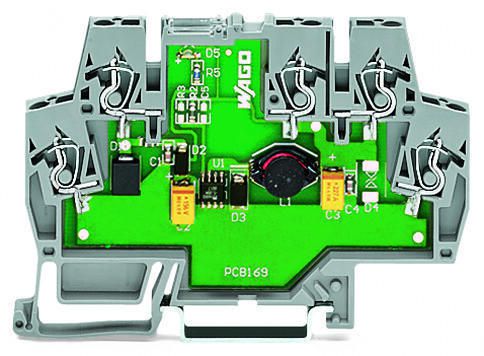DC-to-DC Converter and Its Performance Characteristics
DC-to-DC converters are widely used to efficiently produce the regulated voltage from a source which may or may not be well controlled to a load that might be or may not be constant. In this article, we’ll be discussing DC to DC converter and its important performance characteristics.
What are DC-to-DC converters?
DC to DC converter is a high-frequency power conversion circuit which uses high-frequency switching & inductors, transformers, and capacitors to smooth out the switching noise into regulated DC voltages. The dc-to-dc converter comes in non-isolated and isolated variants. Isolation here is determined by whether or not the input ground is connected to the output ground.
Important Performance Characteristics
These are some of the important characteristics that should be considered in designs.
Efficiency
Using a DC to DC converter is a good practice to ensure that the source providing power to the DC-DC converter is able to provide enough power to the account for inefficiency. A good rule is to assume a DC-DC converter to be 80% efficient, and then using a source with 125% the load power.
Efficiency for DC-to-DC converters is usually specified in curves, with its peak efficiency achieved at a specific load current. However, efficiency may be lower at the lower power outputs, where the amount of power needed for powering the circuit is comparable to the load power.
Current rating
It is the maximum amount of current which a user must try to have the DC-DC converter provide to the load. However, a DC-to-DC converter might offer more than this amount of current, but it’ll get hot, and might even fail.
Temperature rating
It is the maximum ambient temperature that DC to DC converter should run in under the full load. If it exceeds this safety limit, then DC-DC converter may get overheated and can be damaged, or it may shut down as a protective measure.
Transient response
DC to DC converters use the closed feedback loops for providing a regulated output. Changes in load current or input voltage may cause temporary shifts. Speed of the control loop response gives you the idea of how long it’ll take for the buck converter to respond to the changing conditions and to get the output voltage in regulation.
Voltage rating
DC-to-DC converters have the limits on how far up or how far down they can transform the voltage.
Size and weight
DC-to-DC converters can be operated at very high frequencies, allowing them to be made small. Because some loss mechanisms increase with the frequency, this leads them to be less efficient; thus, there is a trade-off between size and efficiency.
